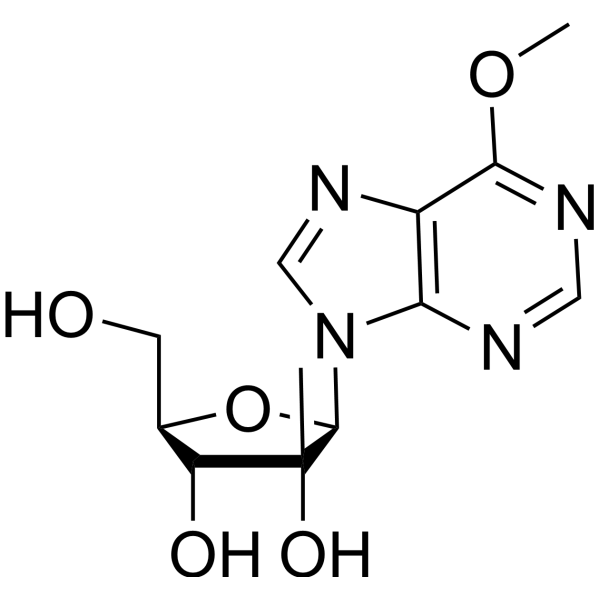6-Methoxy-9-(2-C-Methyl-beta-D-ribofuranosyl)purine
Modify Date: 2024-01-09 16:32:02

6-Methoxy-9-(2-C-Methyl-beta-D-ribofuranosyl)purine structure
|
Common Name | 6-Methoxy-9-(2-C-Methyl-beta-D-ribofuranosyl)purine | ||
|---|---|---|---|---|
| CAS Number | 565450-78-4 | Molecular Weight | 296.28 | |
| Density | N/A | Boiling Point | N/A | |
| Molecular Formula | C12H16N4O5 | Melting Point | N/A | |
| MSDS | N/A | Flash Point | N/A | |
Use of 6-Methoxy-9-(2-C-Methyl-beta-D-ribofuranosyl)purine2′-C-Methyl-6-O-methylinosine is a hypoxanthine analog. Hypoxanthine is a kind of purine base mainly present in muscle tissue. And it is a metabolite produced by purine oxidase acting on xanthine. Hypoxanthine has typical anti-inflammatory effects and is a potential endogenous poly(ADP-ribose) polymerase (PARP) inhibitor. It is cytoprotective by inhibiting PAPR activity, inhibiting peroxynitrite-induced mitochondrial depolarization and secondary superoxide production. Hypoxanthine can also be used as an indicator of hypoxia[1][2]. |
| Name | (2R,3R,4R,5R)-5-Hydroxymethyl-2-(6-methoxy-purin-9-yl)-3-methyl-tetrahydro-furan-3,4-diol |
|---|
| Description | 2′-C-Methyl-6-O-methylinosine is a hypoxanthine analog. Hypoxanthine is a kind of purine base mainly present in muscle tissue. And it is a metabolite produced by purine oxidase acting on xanthine. Hypoxanthine has typical anti-inflammatory effects and is a potential endogenous poly(ADP-ribose) polymerase (PARP) inhibitor. It is cytoprotective by inhibiting PAPR activity, inhibiting peroxynitrite-induced mitochondrial depolarization and secondary superoxide production. Hypoxanthine can also be used as an indicator of hypoxia[1][2]. |
|---|---|
| Related Catalog | |
| References |
| Molecular Formula | C12H16N4O5 |
|---|---|
| Molecular Weight | 296.28 |
| Exact Mass | 296.11200 |
| PSA | 122.75000 |